P
lot structure is the most critical thing about a movie.
Plot structure is what keeps your script, and movie, compelling. It keeps your audiences entertained. It keeps any reader reading.
Easier said than done.
You have to compete with everyone the viewer could text. With every other movie on every single streaming device. All the social media networks. All the memes…

Obviously this movie plot is not super compelling
And as time goes by, the list of distractions will just keep growing.
So what are the secrets writers can use to keep people focused?
Well... the most compelling plot structures use something called dramatic tension.
Knowing how to employ dramatic tension is the art of dramatic writing.
And good dramatic writing is how you keep audiences from checking their phone. It's how you make sure they forget they even have a phone to check.
The best part is this is something you can do by mastering four simple tools.
They are the four best tools for creating tension in your writing, and I'm going to go over them all in this post.
By the end of it you'll be on your way to mastering the art of dramatic writing, and keeping your audiences hooked.
What is plot?
What is plot?
Plot is the sequence of events dramatically arranged by a writer to tell a story. That is a plot structure definition in the strictest sense.
Often the true genius of writing is in recognizing how to order those interrelated events.
So, another way to think about movie plot structure is to answer the question "what happens in the story and in what order?"
Some might say what happens in a story is a character discovers himself. But that's not the plot. It leaves out the critical ordering of the events. The plot of a story is something like "A character loses his job, gets divorced, leaves town, and then lives in the woods alone..."
Those are the elements of plot. It's those events that lead us to think about how the character discovered himself. It's also those events that keep us interested... if they use dramatic tension.
But first, let's go over some plot basics.
Elements of plot
Elements of plot
Dramatic structure, and the earliest plot structure diagram, date back to Aristotle's Poetics.
He was referring to the structure of plays (they didn't have movies back in 335 BCE). Amazingly, however, the same principles applied then that do now. Aristotle was the one who said a story, in his case a play, needed a beginning, middle, and end.
Gustav Freytag developed a five-act structure which has a few more familiar elements of plot. Freytag's five parts were: Exposition, Rising Action, Climax, Falling Action, and Denouement.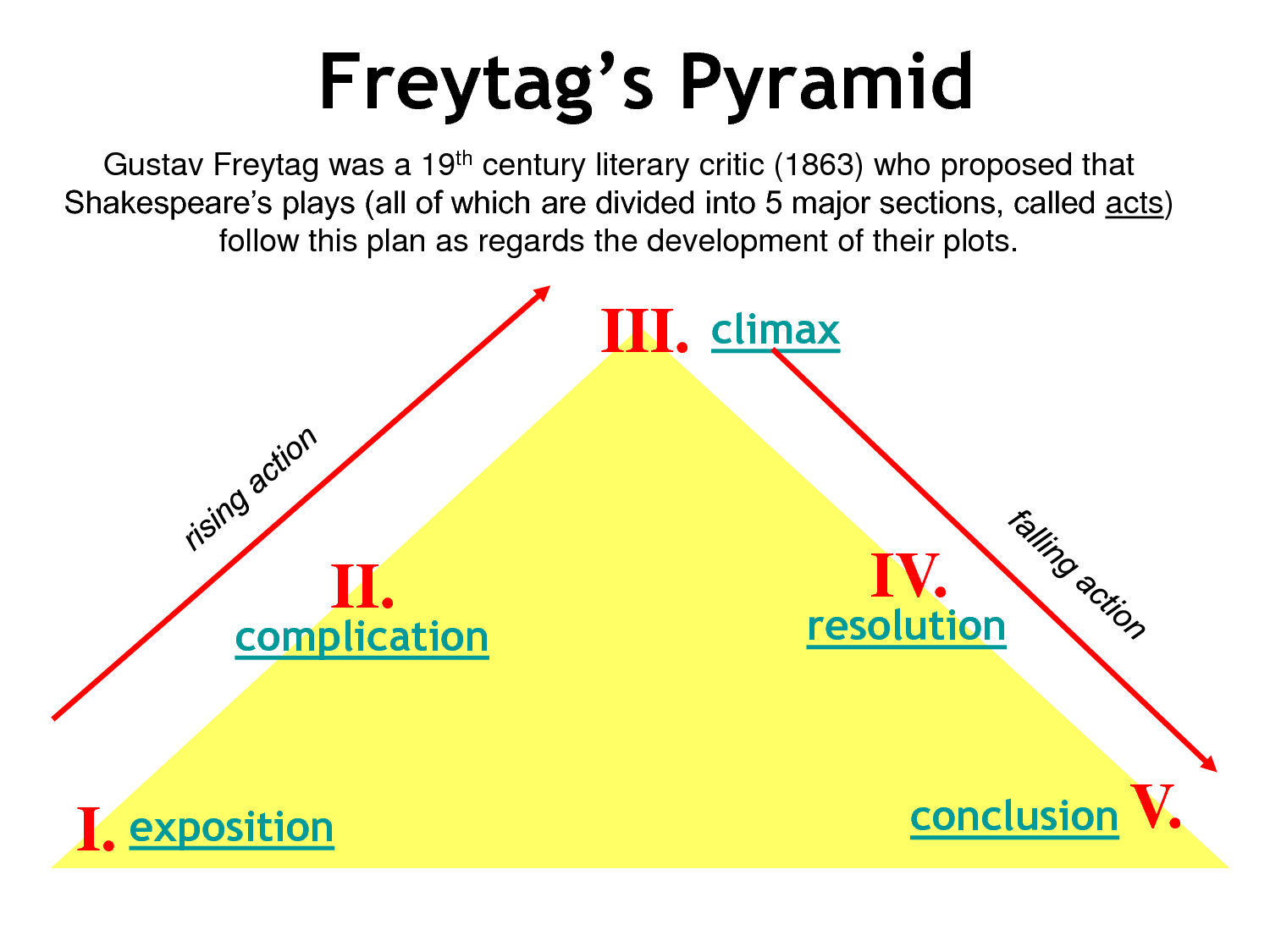
A great plot structure diagram using Freytag’s Pyramid
The first section is an introduction. Rising action "builds" the tension between the characters and the stakes.
The climax is a turning point in the story, and then falling action is a resolution of this crisis.
Finally, the denouement is a resolution, where all the loose ends of the story are wrapped up. Knowing these basic elements of plot are helpful. But what is the plot of a story?
For a little more on story, you might be interested in Dan Harmon's story circle, Blake Snyder's Save the Cat! beat sheet, or this comprehensive look at story outlines. Here's a video breakdown of Avengers: Infinity War and how it lines up with Snyder's story beats.
Infinity War Beat Sheet • Subscribe on YouTube
In this post, we're going to table the discussion of the names of the plot elements and focus more on how they work together and why.
Because the art of dramatic writing is about creating a dynamic plot structure.
Creating dramatic tension in your writing
Creating dramatic tension in your writing
Why do authors create tension in a story?
Is it just to stress us out?
Maybe...?
It's because otherwise, we won't care what happens. Tension in writing keeps us engaged.
But tension in writing is more complex and subtle than you think.
Have you ever been watching something where you knew full well that the characters would survive... but you felt the tension anyway?
It's not just about not knowing the outcome. Sometimes the result is a foregone conclusion.
We know James Bond can't die. Yet in all 300 million James Bond movies filmmakers and writers have maintained tension.

“Without plot structure this scene would have no dramatic tension, Mr. Bond”
It's weird when you think about that. Right?
The movies are always about James Bond being in danger. Yet we know he's never truly in danger.
Yet... we care...
Creating tension is more than just a sense of physical danger. Or even just not knowing the outcome.
So then what it is?
How does tension make audiences care about what will happen?
The four tools
The four tools
The audience's attention must be pushed forwards at all times.
The four tools are about pointing the audience's attention forward with your plot. Ordering the events so audiences care intensely about what will happen next.
And that's about things other than just if James Bond will die...
1. TELEGRAPHING
This tool is about creating an appointment in the future.
It's a pretty simple tool, picture your protagonist setting up an appointment with his wife in the first scene of the movie.
The first thing this does is it established that the protagonist has a wife.
It also establishes a specific plot expectation. He is planning to see her. It's not an unusually high stakes situation. But it exists in our minds.
It has us thinking about something that is going to happen later.
If it's a plot point, and a factor in your plot structure, he might forget it. He might be late for it. Maybe he'll send a look-alike in his place.
He also might go right after learning from his doctor that he has less than a month to live, and we're wondering if he'll tell her.
This is how you use telegraphing to develop your movie plot structure with dramatic writing.
2. DANGLING CAUSE
The second tool is called the dangling cause, and it's about an unanswered question.
Where the telegraph was possible to miss, a dangling cause is harder.
A good example would be a character vowing to ask his fiance to marry him. Now we're waiting to see when he does it. And what she says.
A lot of great movies set up their plots around dangling causes. In Lawrence of Arabia, Lawrence says he wants to go to the desert to see what it may hold. His friend warns him against this.
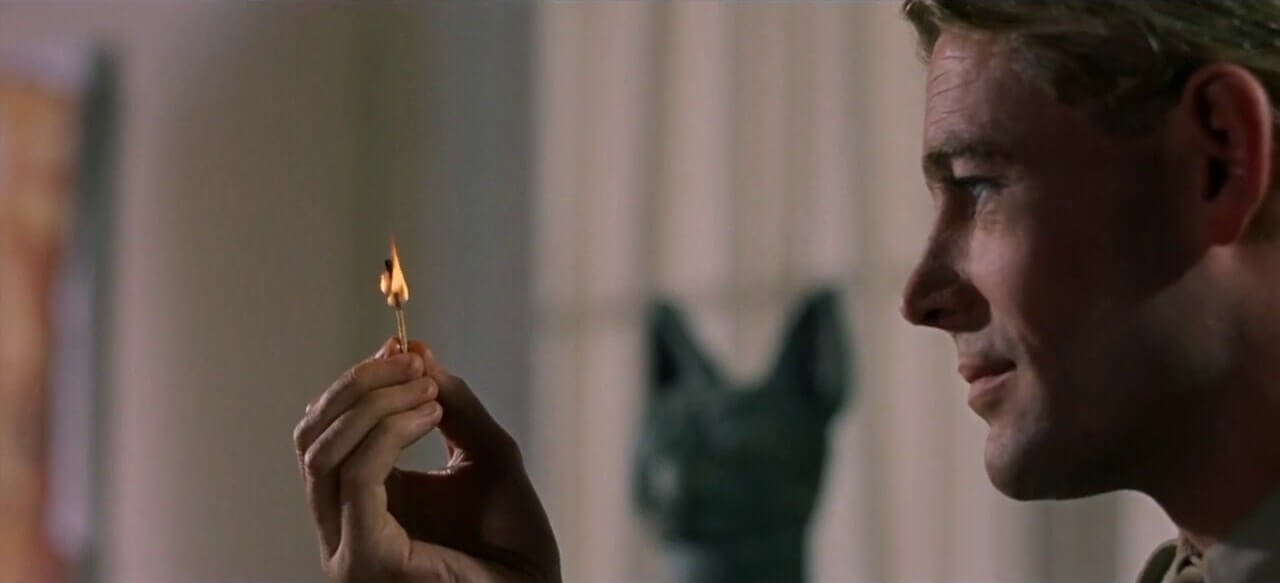
As far as movie plots go, Lawrence of Arabia could’ve been a bit tighter. But it works because of its dramatic writing.
An issued warning is a kind of dangling cause. It sets up stakes, and a possible outcome we're looking out for.
When you dangle a cause, you have to pay it off later. That's another way in which creating this tension factors into your plot structure.
Don't list the events that happen. Set up expectations for specific events. Then subvert them. Effectively "keeping us on our toes."
3. DRAMATIC IRONY
This is one of the most fun ways to create tension in writing. Both for an audience and for a writer. It's a great tool for comedy in particular.
This plot structure tool is about when you reveal information. Remember the question “What is plot?” One answer is it’s when you reveal story points.
A great example of this tool in action is the movie North By Northwest. If you're unfamiliar with it, check it out. It's one of the all-time greats and holds up very well.
The way Alfred Hitchcock uses dramatic irony to move his movie plot forward will keep you engaged the entire time.
In the film, Cary Grant's character gets help from Eva Marie Saint. Then we later learn that she's working against him.
We, the audience, learn this before he does. Thus creating what's called "ironic tension." The irony is that WE know that Cary Grant is in trouble. Cary Grant does not know.
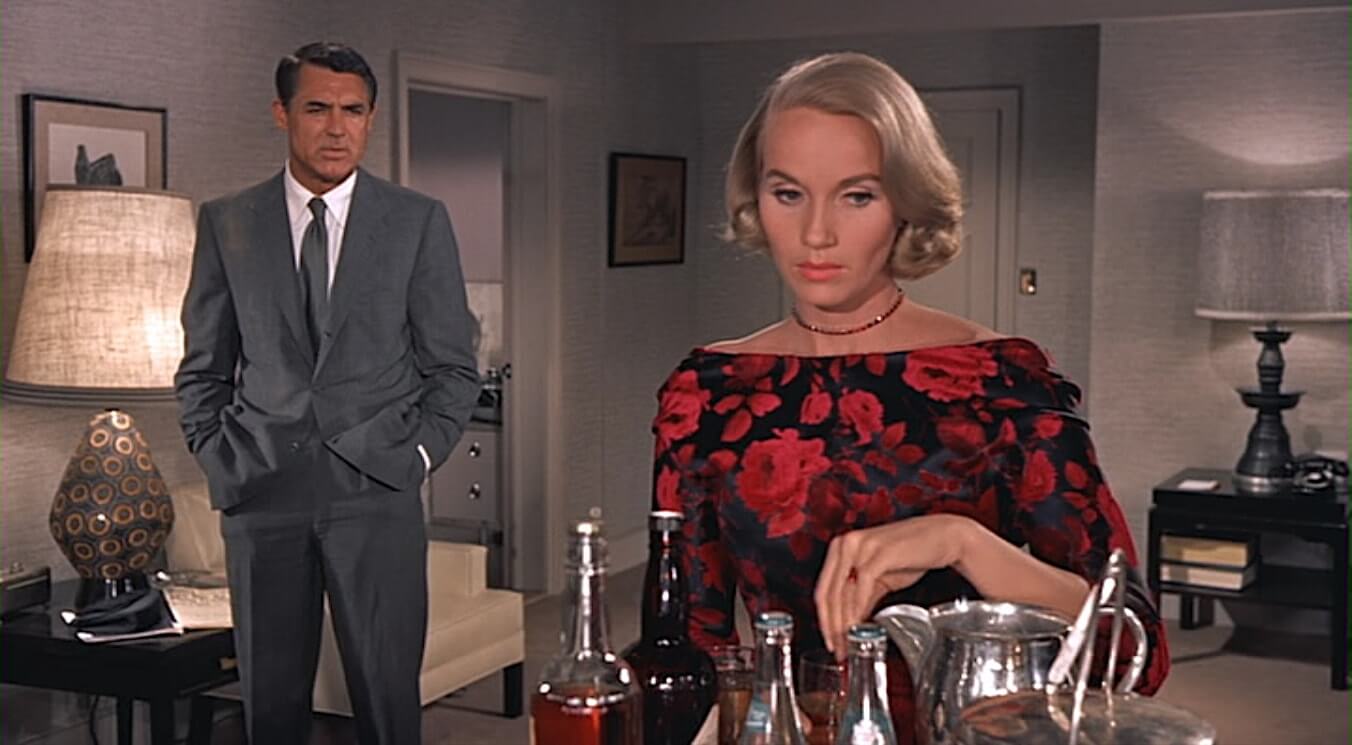
North By Northwest has a plot structure diagram worthy of detailed study
Hitchcock loved this tool. He referred to it as the "bomb under the table" lesson in his interviews with Francois Truffaut. A must read for any aspiring filmmaker.
Giving your audience information the characters don't have is a potent weapon.
Hitchcock takes it even farther in North By Northwest when he shows Cary Grant leaning that Eva Marie Saint is a villain.
Now he knows, and we know, but she doesn't know that he knows.
See what happened? Layers of dramatic irony built into the plot structure, driving both movie plot and audience attention forward.
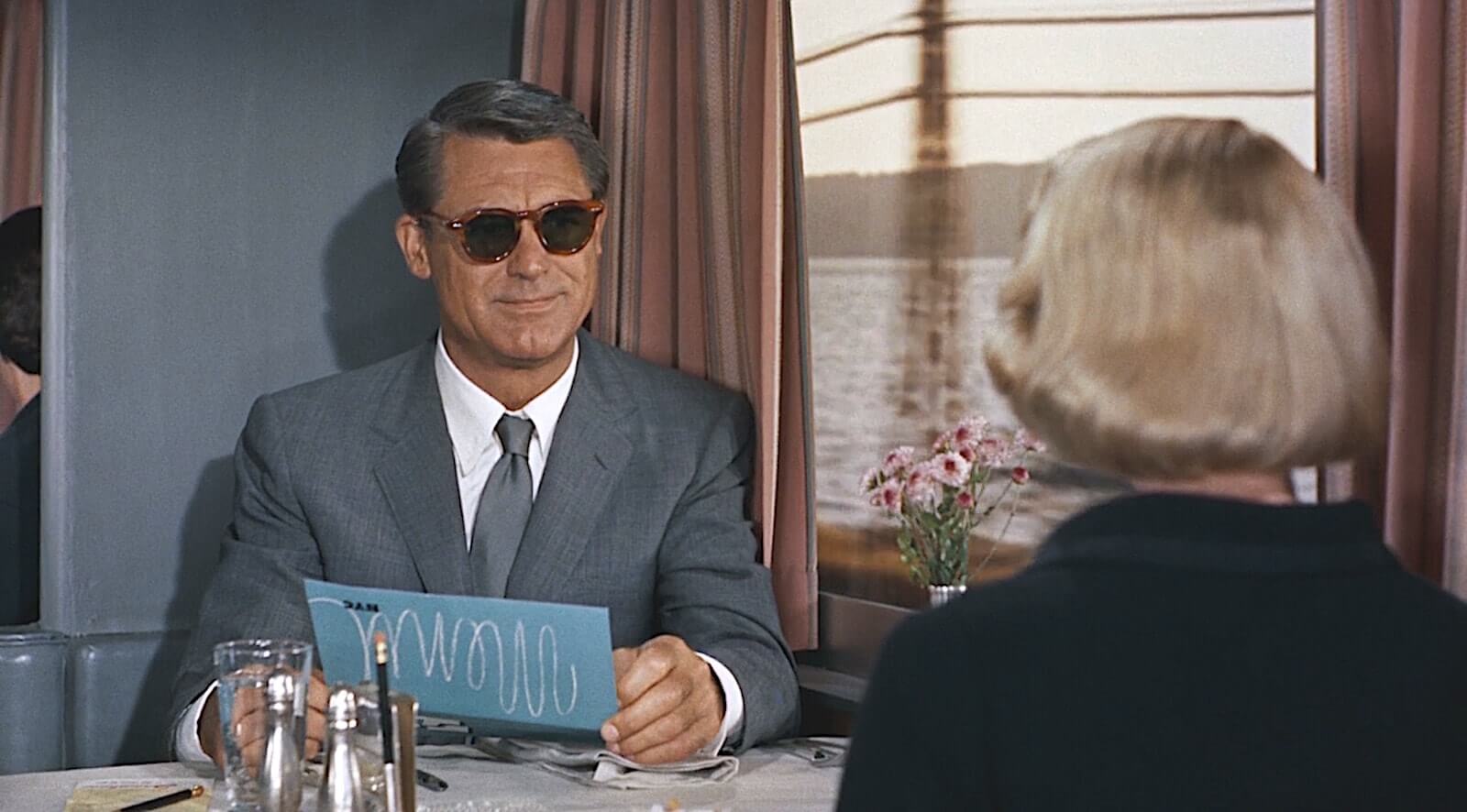
What is plot? Watch North By Northwest for a master class on the subject.
DRAMATIC IRONY IN COMEDY
With all this going on, the audience might not pick up their phones and reply to those texts.
When it comes to comedy, this plot structure tool is excellent for building jokes.
Send a character into a situation with one set of information. Meanwhile, we know the real information. This is done in sitcoms all the time.
In There's Something About Mary, police interrogate Ben Stiller. While he thinks they're asking about a hitchhiker, they are asking about a murderer.
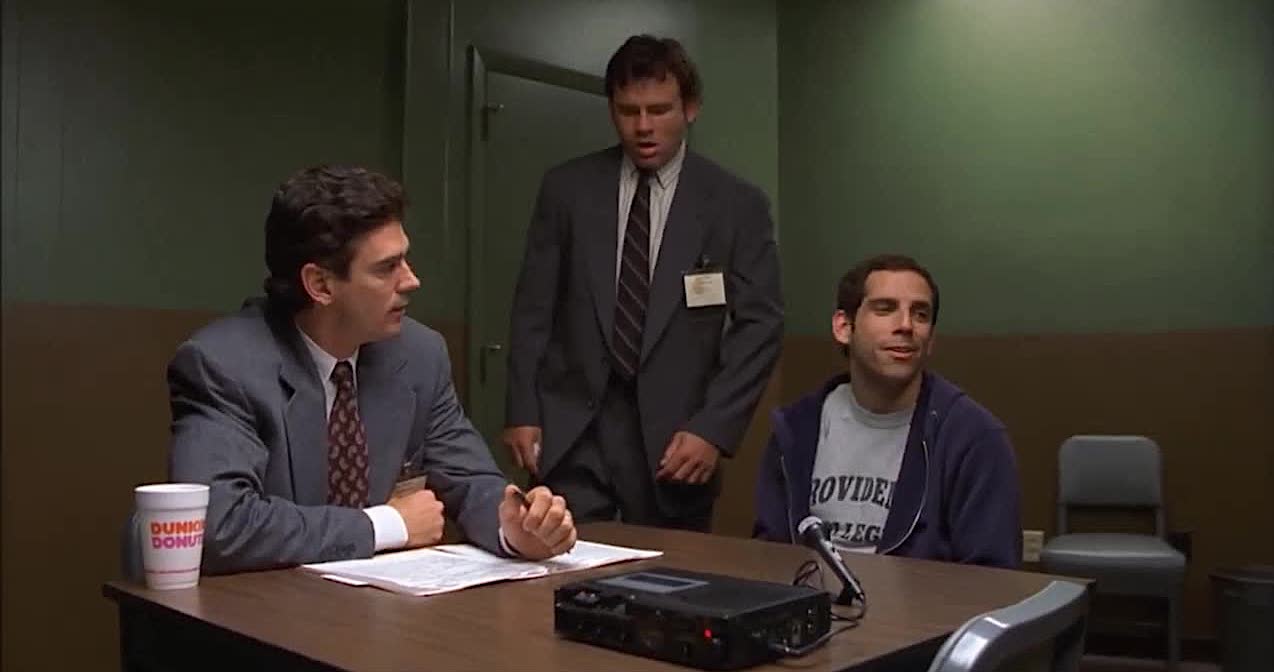
Why do authors create tension in a story? Sometimes for jokes.
The longer the writers build on his lack of insight into the situation, the more they are "milking" the joke.
4. DRAMATIC TENSION
We've finally reached tool number four, the big one.
Dramatic tension is the guiding principle behind creating tension in your story. This tool is the key to stronger plot structure.
"Somebody wants something very badly and is having a hard time getting it."
That is, in essence, any plot's dramatic tension.
It is the tension in every scene, every act, and every complete story. Every "beat" is a turn along this road.
There is an objective, and obstacle, and a resolution.
The resolution, unless it's the end of the story, should open up a new objective.
I have this, but now I need that...
I don't have X, so instead, I'll try and get Y.
This is sounding very simple. But it's easy for any writer to forget.
You can also think of the whole plot structure in terms of this. Act one presents us with an objective.
Act two presents us with obstacles, and act three provides resolution.
Always use dramatic tension. Pepper in the other kinds, but dramatic tension is the meat and potatoes of this diet.
Once you can use these four tools, you'll have mastered...
The art of dramatic writing
The art of dramatic writing
Once you've been able to lay the foundation of plot, the artistic process starts taking over.
There is another way to look at the three acts in your plot, once you've nailed down objective, obstacle, and resolution.
Act one is inspiration. Act two is craft, and act three is philosophy.
Now, don't forget the first layer. And don't forget that every scene within the plot structure should use the four tools.
If you aren't creating that forward driving tension in your plot, you're not keeping us engaged.
Furthermore, act two is "craft" because you'll use the plot tension dynamics regularly.
If you think about it, a movie's runtime is predominantly diversions on the way to a goal.
MOST of what we are watching is someone navigating the obstacles in their path. It's all about delayed gratification.
With that in mind, act one and act three need a little something more.
Inspiration
Inspiration
Your plot's first act should be drawn mostly from the idea that inspired you in the first place.
First acts tend to be easier to write for this reason. It's why you wanted to write this story in the first place.
Your goal here is to make us feel as inspired to watch it play out as you were to write it.
Philosophy
Philosophy
Don't get scared off by this one. It's not philosophy like you need to quote Plato in the third act.
But instead of just "falling action" or "resolution," which make it seem like things might get a little... boring, think of it as pay off.
Then think of it as where you get to show us 'why.'
Why was this story worth telling? What's the point?
Think about the end of The Dark Knight. It goes on a bit too long and does a bit more telling than showing (a cardinal writing sin.)
Yet the concept is well in place. This story was worth telling because it's about what Batman sacrificed for the greater good. It's about the ideas of real heroism and nobility.
Think about some of your favorite movies and think about every act, then scene, in terms of objective/obstacle/resolution.
Then break them down into the inspiration, craft, and philosophy.
up next
Character Development: Write Stronger Characters
Often plot structure is about theory. It's about applying logic to a finished product that wasn't always there, to begin with.
On the other hand, dramatic tension is practical. Without it, readers won't care to finish the script. Audiences won't care to finish the movie.
Hopefully now you have the tools to execute an excellent plot yourself.
The best writers keep audiences interested from the first minute to the last, using the four tools of plot tension. Your plot structure must be constructed around these principles.
If you can do that, and then add in your inspiration and philosophy, you'll be on your way to mastering the art of dramatic writing.
Up Next: Character Development: Write Stronger Characters →
Easily create script breakdown sheets online.
Import scripts. Tag elements like props, wardrobe, and cast. Create breakdown summaries and DOOD reports in a snap.
